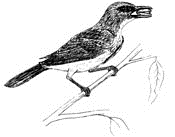Vertebrate Pest Conference: Proceedings

Vertebrate Pest Conference Proceedings: 17th (1996)
Date of this Version
1996
Document Type
Article
Citation
Published in Proceedings: Seventeenth Vertebrate Pest Conference … 1996, ed. Robert M. Timm & A. Charles Crabb (University of California, Davis, 1996).
Abstract
The membership of the National Animal Damage Control Association (NADCA) was surveyed during 1995 to collect information about specialty fields, preferred methods and experience. Respondents had broad experience that included 44 species or species groups. Members reported firsthand experience with an average of 17.6 different species and 2.9 vertebrate groups. Forty-three percent indicated that their specialization was among carnivores. In this group, coyotes, Canis latrans (45%), raccoon, Procyon lotor (23%) and skunk (13%) were most frequently mentioned. Members reporting carnivore experience had firsthand experience with an average of five different species. Rural and urban members did not significantly differ in breadth of experience with carnivores. Respondents most frequently specialized with coyote (11.8%), raccoon (11.5%), beaver, Castor canadensis (9.6%) and tree squirrel, Sciurus spp. (6.8%). Trapping was the most used technique for most mammals. Exceptions were deer or elk where exclusion was preferred. Blackbirds and starlings, Sturnus vulgaris, were most often controlled by repellents or scare tactics. Removal of an animal was the most common and preferred method and represented about 70% of responses for first choice.
Included in
Animal Sciences Commons, Bioresource and Agricultural Engineering Commons, Environmental Engineering Commons


Comments
Copyright © 1996 (where applicable) by the Vertebrate Pest Council of the Vertebrate Pest Conference. Used by permission.